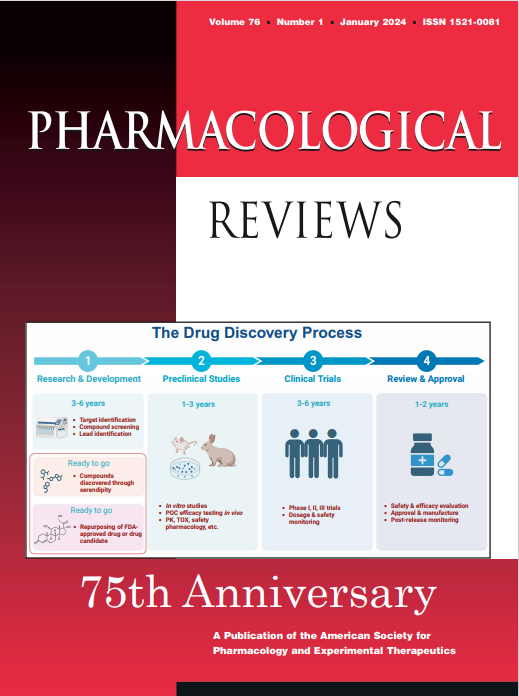Ferroptosis and pathogenesis of neuritic plaques in Alzheimer's Disease.
IF 17.3
1区 医学
Q1 PHARMACOLOGY & PHARMACY
引用次数: 0
Abstract
Neuritic plaques are pathognomonic and terminal lesions of Alzheimer's Disease (AD). They embody AD pathogenesis because they harbor in one space critical pathologic features of the disease: amyloid deposits, neurofibrillary degeneration (NFD), neuroinflammation, iron accumulation. Neuritic plaques are thought to arise from the conversion of diffuse extracellular deposits of amyloid beta protein (Aβ), and it is believed that during conversion amyloid toxicity creates the dystrophic neurites of neuritic plaques, as well as neurofibrillary tangles (NFTs). However, recent evidence from human post-mortem studies suggests a much different mechanism of neuritic plaque formation where the first step in their creation is neuronal degeneration driven by iron overload and ferroptosis. Similarly, NFTs represent corpses of iron-laden neurons that develop independent of Aβ deposits. In this review, we will focus on the role of free redox-active iron in the development of typical AD pathology, as determined largely by evidence obtained in human temporal lobe during early, preclinical stages of AD. The findings have allowed construction of a scheme of AD pathogenesis where brain iron is center stage and is involved in every step of the sequence of events that produce characteristic AD pathology. We will discuss how the study of preclinical AD has produced a fresh and revised assessment of AD pathogenesis that may be important for reconsidering current therapeutic efforts and guiding future ones. Significance Statement This review offers a novel perspective on AD pathogenesis where elevated brain iron plays a central role and is involved throughout the development of lesions. We review arguments against the amyloid cascade theory and explain how recent findings in humans during early preclinical disease support iron-mediated cell death and endogenous iron containment mechanisms as critical components of neuritic plaque formation and the ensuing dementia.阿兹海默病中的铁蛋白沉积和神经细胞斑块的发病机理。
神经斑块是阿尔茨海默病(AD)的标志性终末病变。它们体现了阿兹海默病的发病机制,因为它们在一个空间内蕴藏了该病的关键病理特征:淀粉样蛋白沉积、神经纤维变性(NFD)、神经炎症、铁积聚。神经炎斑块被认为是由淀粉样β蛋白(Aβ)的细胞外弥漫沉积转化而来,人们认为淀粉样蛋白毒性在转化过程中产生了神经炎斑块的萎缩性神经元以及神经纤维缠结(NFT)。然而,最近来自人类尸体研究的证据表明,神经斑块的形成机制与此大相径庭,神经斑块形成的第一步是由铁超载和铁变态反应驱动的神经元变性。同样,NFTs代表了独立于Aβ沉积而形成的铁负荷神经元的尸体。在本综述中,我们将重点讨论游离氧化还原活性铁在典型 AD 病理学发展中的作用,这主要是由 AD 早期临床前阶段在人类颞叶获得的证据所决定的。通过这些发现,我们构建了一个关于注意力缺失症发病机制的方案,在这个方案中,脑铁处于中心位置,参与了产生注意力缺失症特征性病理的一系列事件的每一个步骤。我们将讨论临床前注意力缺失症的研究如何对注意力缺失症的发病机制进行了全新的评估和修订,这可能对重新考虑当前的治疗方法和指导未来的治疗具有重要意义。意义声明 这篇综述从一个新的角度探讨了AD的发病机制,其中脑铁升高在整个病变发展过程中起着核心作用。我们回顾了反对淀粉样蛋白级联理论的论点,并解释了最近在人类早期临床前疾病中的发现如何支持铁介导的细胞死亡和内源性铁遏制机制作为神经斑块形成和随之而来的痴呆症的关键组成部分。
本文章由计算机程序翻译,如有差异,请以英文原文为准。
求助全文
约1分钟内获得全文
求助全文
来源期刊

Pharmacological Reviews
医学-药学
CiteScore
34.70
自引率
0.50%
发文量
40
期刊介绍:
Pharmacological Reviews is a highly popular and well-received journal that has a long and rich history of success. It was first published in 1949 and is currently published bimonthly online by the American Society for Pharmacology and Experimental Therapeutics. The journal is indexed or abstracted by various databases, including Biological Abstracts, BIOSIS Previews Database, Biosciences Information Service, Current Contents/Life Sciences, EMBASE/Excerpta Medica, Index Medicus, Index to Scientific Reviews, Medical Documentation Service, Reference Update, Research Alerts, Science Citation Index, and SciSearch. Pharmacological Reviews offers comprehensive reviews of new pharmacological fields and is able to stay up-to-date with published content. Overall, it is highly regarded by scholars.
 求助内容:
求助内容: 应助结果提醒方式:
应助结果提醒方式:


